Which brain characters are dominant in you and your students?
7Many years ago, a student of mine shared his jury duty experience in a complicated court case. After taking part in a jury discussion of the evidence presented, he was stunned by how differently each juror viewed the exact same evidence. He said that some of them analyzed the presented evidence clinically and analytically, others kept linking it to their own past experiences, yet others were willing to excuse any bad behavior as no big deal. The jury did reach a verdict in the case, but he walked away from that experience forever wondering whether justice was served.
In our daily life, we are the jury in our own lives as we reach verdicts about everything we experience and base our actions on those verdicts. We also have to deal with a multitude of voices in our own heads who assess the situation at hand from various perspectives.
Jill Bolte Taylor, the neuroscientist and author of Whole Brain Living: the Anatomy of Choice and the Four Characters that Drive Our Life, uses the image of four brain characters to describe specific clusters of cells within our brains that process the same incoming information but react to it in very different ways. That reaction depends on where the cells are located in the brain: the thinking or the emotional part, in the right or the left brain hemisphere. Those characters have distinctive personalities and their own set of ideas about what’s best for their owner. They often spar with one another for dominance and want to impose their will on your actions.
Today let’s take a closer look at those characters and how they differ from one another.
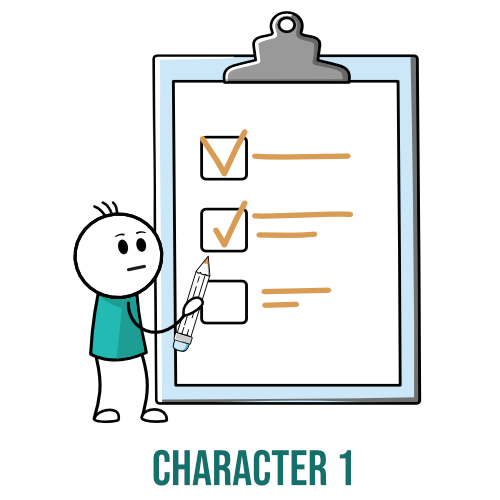 Character 1 is the thinking part of your left brain (thinking + separate). Since your left brain is designed to create order out of the randomness of life, it views things as separate, examines their differences, then organizes and categorizes them. Your Character 1 is clinical and non-emotional, but because of its ability to discriminate, it passes judgment on what’s good and bad, right and wrong. It establishes your worldview and belief system. It is purposeful, intentional, and thorough. “Character 1s wake up in the morning and see the day as something to be conquered. They are eager beavers who rise early, love routines, and thrive on crossing things off their lists. On the job, Character 1s are effective leaders and good at managing people, places, and things. They laser focus their minds on details and are extremely productive. They are highly critical of their own performance and consistently compare themselves with others. Every day is a chance to sharpen their skills, and it’s important to Character 1s to bring their most efficient selves forward. […] By design, Character 1s are gifted rational thinkers with a strong mastery of reality, so they reason their way to their best decision. […] Besides being great at fixing things, cleaning up messes, and running tight schedules all at the same time, our Character 1 respects authority, obeys rules, and consequently tends to keep us from doing really stupid things.” (1)
Character 1 is the thinking part of your left brain (thinking + separate). Since your left brain is designed to create order out of the randomness of life, it views things as separate, examines their differences, then organizes and categorizes them. Your Character 1 is clinical and non-emotional, but because of its ability to discriminate, it passes judgment on what’s good and bad, right and wrong. It establishes your worldview and belief system. It is purposeful, intentional, and thorough. “Character 1s wake up in the morning and see the day as something to be conquered. They are eager beavers who rise early, love routines, and thrive on crossing things off their lists. On the job, Character 1s are effective leaders and good at managing people, places, and things. They laser focus their minds on details and are extremely productive. They are highly critical of their own performance and consistently compare themselves with others. Every day is a chance to sharpen their skills, and it’s important to Character 1s to bring their most efficient selves forward. […] By design, Character 1s are gifted rational thinkers with a strong mastery of reality, so they reason their way to their best decision. […] Besides being great at fixing things, cleaning up messes, and running tight schedules all at the same time, our Character 1 respects authority, obeys rules, and consequently tends to keep us from doing really stupid things.” (1)
You know that Character 1 is in charge when your student wants to know your qualifications and credentials, quizzes you about the purpose of each pose and technique, wants to know exactly how long it will take them to be able to touch their toes, and requires a structured yoga plan to follow.
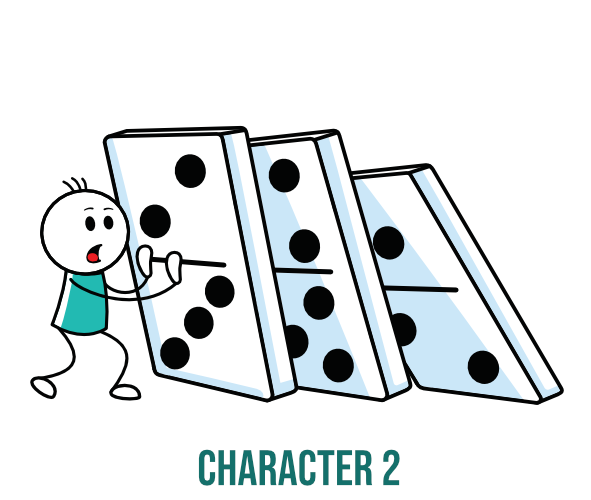 Character 2 is the emotional part of your left brain (emotional + separate). It is the reptilian brain that is mostly instinctual and concerned with your survival. It responds to stimulation by triggering fixed patterns of behavior. It constantly scans your environment to assess whether you are safe (physically and emotionally) and constantly compares this moment to your past experiences, which is why it is so affected by past trauma. Our Character 2 is very aware of everything that can go wrong and is primarily concerned with the potential of death, pain, and sickness. It has the “negativity bias,” which means that it always expects the worst. “It is this audacious Character 2 who faces our deepest fears and sounds our alarm for danger in the only way it knows how. It wails, it whines, it cheats, it schemes, it self-loathes, it gets jealous, it gets angry, it feels guilt and shame, and it acts out in a million antisocial ways to get our attention. […] When the emotional pain of our Character 2 is not listened to or validated, it has the power to manifest as physical disease. As a result, it is our emotional Character 2 that often holds the key to our physical and mental well-being.” (1)
Character 2 is the emotional part of your left brain (emotional + separate). It is the reptilian brain that is mostly instinctual and concerned with your survival. It responds to stimulation by triggering fixed patterns of behavior. It constantly scans your environment to assess whether you are safe (physically and emotionally) and constantly compares this moment to your past experiences, which is why it is so affected by past trauma. Our Character 2 is very aware of everything that can go wrong and is primarily concerned with the potential of death, pain, and sickness. It has the “negativity bias,” which means that it always expects the worst. “It is this audacious Character 2 who faces our deepest fears and sounds our alarm for danger in the only way it knows how. It wails, it whines, it cheats, it schemes, it self-loathes, it gets jealous, it gets angry, it feels guilt and shame, and it acts out in a million antisocial ways to get our attention. […] When the emotional pain of our Character 2 is not listened to or validated, it has the power to manifest as physical disease. As a result, it is our emotional Character 2 that often holds the key to our physical and mental well-being.” (1)
You know that Character 2 is in charge when your student worries that this pain they feel right now will never go away, gets emotional after a themed class, lashes out at you for your choice of words/music/imagery/ etc., or stops coming to class because they felt neglected/targeted/unsafe/excluded/less than in any way.
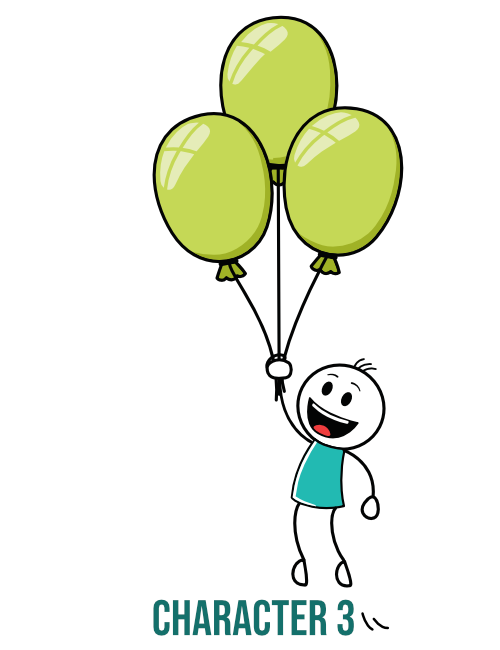 Character 3 is the emotional part of your right brain (emotional + interconnected). Character 3 lives entirely in the present moment with all its complexity. It is attuned to the facial expressions and body language of people around and the immediate sensory experience of textures, sights, and smells. It feels at one with the universe and sees possibilities instead of limitations. It is funny, curious, and playful. “Our Character 3 is like a puppy that is always watching every move you make, ready to pounce the moment you reach for the leash, toy, or food bowl.” Character 3 is very social and loves to have a good time in company. “Wide open emotionally and in the present moment, we become a pack and feel comradery with everyone who is joining in. When we get excited together, we share a deep connection, and these become the moments we cherish, talk about and later embellish. We thrive as a collective, connected by our similarities and overlooking our differences.” (1) Character 3s are also compulsive and tend to dive into things without a plan. They just do what feels good in the moment and hope for the best.
Character 3 is the emotional part of your right brain (emotional + interconnected). Character 3 lives entirely in the present moment with all its complexity. It is attuned to the facial expressions and body language of people around and the immediate sensory experience of textures, sights, and smells. It feels at one with the universe and sees possibilities instead of limitations. It is funny, curious, and playful. “Our Character 3 is like a puppy that is always watching every move you make, ready to pounce the moment you reach for the leash, toy, or food bowl.” Character 3 is very social and loves to have a good time in company. “Wide open emotionally and in the present moment, we become a pack and feel comradery with everyone who is joining in. When we get excited together, we share a deep connection, and these become the moments we cherish, talk about and later embellish. We thrive as a collective, connected by our similarities and overlooking our differences.” (1) Character 3s are also compulsive and tend to dive into things without a plan. They just do what feels good in the moment and hope for the best.
You know that Character 3 is in charge when your students linger after class and you hear bursts of laughter from the hall. Character 3 is running the show when your students focus on their sensory input and when they flip up into the Headstand against your advice. Character 3s don’t return to class unless it’s fun, varied, and social; they don’t follow your homework assignments unless it feels good in the moment; they could care less about structure or reasons for your pose choices but like to play with intention in the moment.
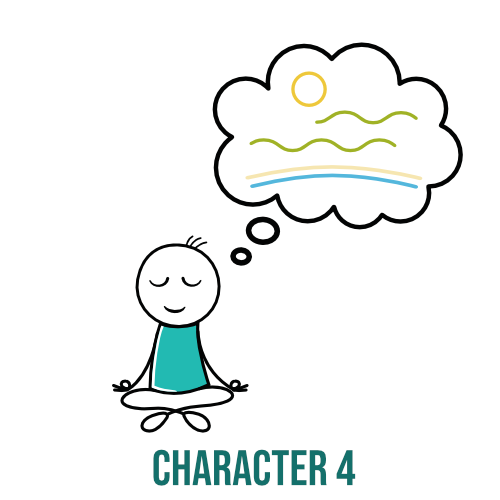 Character 4 is the thinking part of your right brain (interconnected consciousness). Character 4 makes us feel open, conscious, and aware that everything is exactly the way it’s supposed to be. Our Character 4 knows that we are worthy and whole. “Our Character 4 does not judge, it simply celebrates with wonder the life that it lives. […] Inside the expanded consciousness of our Character 4, where we have no physical boundaries or sense of our own individuality, we perceive ourselves to be both as big as the universe and enveloped in the deep, eternal love of the cosmic flow. The feeling of the cosmos, the sensation of an all-pervading experience of deep inner peace and love, is available to us in life and is what we will turn to in death. Within this awareness that we are safe regardless of our physical circumstance, we can exhale into this experience of deep inner peace and contentment, where we are perfect, whole, and beautiful. The road to true enlightenment is knowing that this eternal peace is our future, present, and past.” (1)
Character 4 is the thinking part of your right brain (interconnected consciousness). Character 4 makes us feel open, conscious, and aware that everything is exactly the way it’s supposed to be. Our Character 4 knows that we are worthy and whole. “Our Character 4 does not judge, it simply celebrates with wonder the life that it lives. […] Inside the expanded consciousness of our Character 4, where we have no physical boundaries or sense of our own individuality, we perceive ourselves to be both as big as the universe and enveloped in the deep, eternal love of the cosmic flow. The feeling of the cosmos, the sensation of an all-pervading experience of deep inner peace and love, is available to us in life and is what we will turn to in death. Within this awareness that we are safe regardless of our physical circumstance, we can exhale into this experience of deep inner peace and contentment, where we are perfect, whole, and beautiful. The road to true enlightenment is knowing that this eternal peace is our future, present, and past.” (1)
Your students get in touch with Character 4 when they appear alert and aware at the end of a meaningful class, or suddenly realize that whatever they are going through is a stage that they can confidently navigate, or connect to the ever-present part of themselves that knows exactly what they need to heal. Whenever your student feels grateful, authentic, clear, and aware, they are embracing their Character 4.
You might be used to relying on one of those characters more than the others. However, if you let one of your characters dominate your life at the expense of others, you will be suppressing essential parts of yourself and denying yourself a sense of wholeness. We seem to be the happiest when all characters come together and support each other in tasks big and small. The yoga tradition tends to agree. We will discuss what the yoga sutras say about it next time – tune in!
[jetpack_subscription_form]
References
-
Whole Brain Living: The Anatomy of Choice and the Four Characters That Drive Our Life by Jill Bolte Taylor (affiliate link)

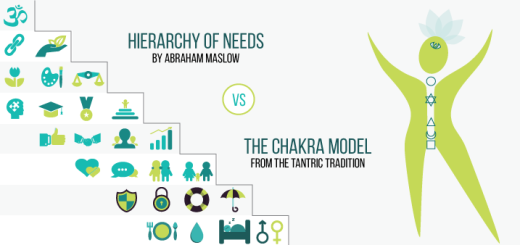

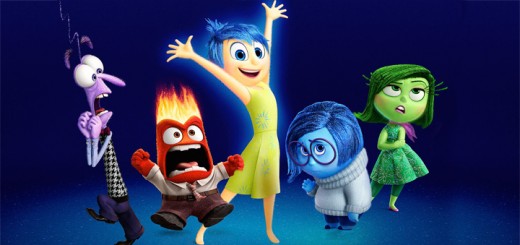
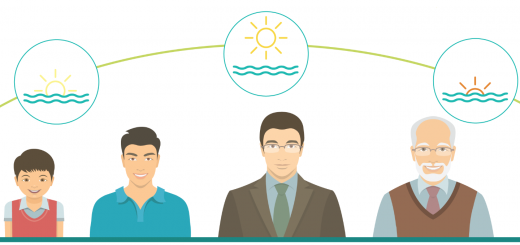















I am really enjoying this information and am actually glad that you are only offering it in sections. This is forcing me to stop and contemplate the info in smaller bites that I can actually digest. Thank you. I am anxious to hear it all tho!
So glad to hear you are enjoying it! Yes; it definitely takes time to process 🙂 It’s also super fun to talk it over with someone, so sharing the articles and/or the book with a friend or family member, or colleague might be fun.
Very interesting way to frame personality traits and I particularly enjoyed how these 4 traits manifested in yoga students. I had an experience teaching a class last night that this framework helped me to see more clearly.
Thanks!
That’s wonderful to hear! I find that for myself it definitely helps to put things into perspective. There is also a cool chapter in the book that discusses how different characters interact with each other in relationships – very enlightening 🙂
Hi Olga,
I am really looking forward to reading Whole Brain Living. Thank you for recommending it. I just ordered it.
I am a retired yoga instructor and really enjoy your website, practices, and great content that you share. Thanks for all you do!
Ann
Thank you, Ann; it’s so lovely to connect with you!
Dear Olga,
This article is very informative for myself and my students. You are up-to-date on the most interesting facts for Yoga teachers. Thank you for all the wonderful articles.